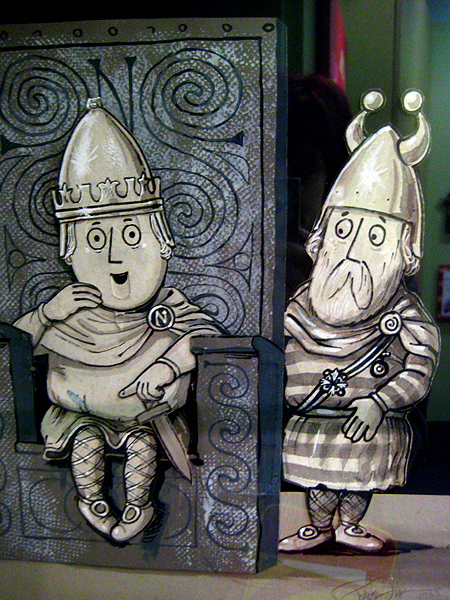Henry IV, Part Two
Shakespeare’s Globe Theatre July 3 – October 3, 2010
‘Does anyone ever do Henry IV, Part Two by itself?’ asks my dad after we emerge from Dominic Dromgoole’s most excellent sequel at The Globe. Probably not, because although it is a superlative historical drama, it follows on from Part One too comfortably to stand alone.
Prince Hal (Jamie Parker) is still unsure where he fits in life; like Prince Charles, his job is to wait for his monarch-parent to die. The moment when Hal thinks this has happened is shockingly powerful and moving as he has the temerity to touch the crown, only to then stand silent and chastised as his father (Oliver Cotton) remonstrates with him.
Falstaff (Roger Allam) is still a powerful coward full of bombast and bravado. Age and the law are catching up with him, however, and he is slightly more contemplative as he realises he has no true friends and may have only a lonely dotage ahead of him. He tries to shrug off such reflections with cheap tricks and ale but the merry-making seems forced. We understand why actors relish the role of Falstaff and why he is the only one of Shakespeare’s characters to get his own spin-off play, but also when Hal and his ‘shadow’ Poins (Danny Lee Wynter) tire of him, it is easier to share their disillusionment than in Part One.
The tavern scenes are exquisitely executed, from the distressed Mistress Quickly (Barbara Marten) who is simply trying to make a profit and avoid ‘swaggerers’ while her husband nonchalantly smokes his pipe on the balcony, to the vigorous slapstick humour of Doll Tearsheet (Jade Williams). She proves adept at physical comedy as she hurls herself (in more ways than one) across the stage –let’s just say the groundlings at the front get slightly more than they bargained for.
There are yet more politics and manoeuvres in this second part of the trilogy and they continue to be expressed with intelligence and clarity. A particularly Machiavellian piece of skulduggery reveals Hal’s younger brother John of Lancaster (Joseph Timms) in a not-entirely-honourable light. He is steadfast and practical, however, and more like a stereotypical older brother who gets the job done without any of Hal’s shenanigans, of which he clearly disaproves.
William Gaunt is quite brilliant as the doddering old Shallow bringing humour to what could otherwise be quite tedious scenes of choosing soldiers, and providing such much-needed lightness as the tone darkens. He is delightfully shambolic and his double act with Silence played by Christopher Godwin is the best I’ve seen since Morecambe and Wise.
With the death of his father, Prince Hal becomes King Henry V and his return to the stage (he is absent for three-quarters of the play) makes it shine anew. Although he claims, ‘This new and gorgeous garment, majesty/ Sits not so easy on me as you think’, he does in fact assume the mantle with aplomb. And when he rejects Falstaff at the conclusion, we are not as sad as we might be because we know it would be disastrous if, as the dissolute knight has boasted, ‘the laws of England are at my commandement’.
The new king reveals a glimpse of the old playboy when he promises he will reward Falstaff and his companions with advancement, but assures them it will only be ‘as we hear you do reform yourselves’ and not purely through nepotism. Already he is proving to be an adherent to fairness and justice – the audience can once again leave on a high knowing the (past) future of England is in good hands.









.JPG)
.JPG)
.JPG)
.jpg)
.jpg)
.jpg)
.jpg)
.jpg)
.jpg)
.jpg)
.jpg)
.jpg)




.JPG)
.JPG)
.JPG)
.JPG)
.JPG)
.JPG)
.JPG)
.JPG)
.JPG)
.JPG)
.JPG)
.JPG)
.JPG)




